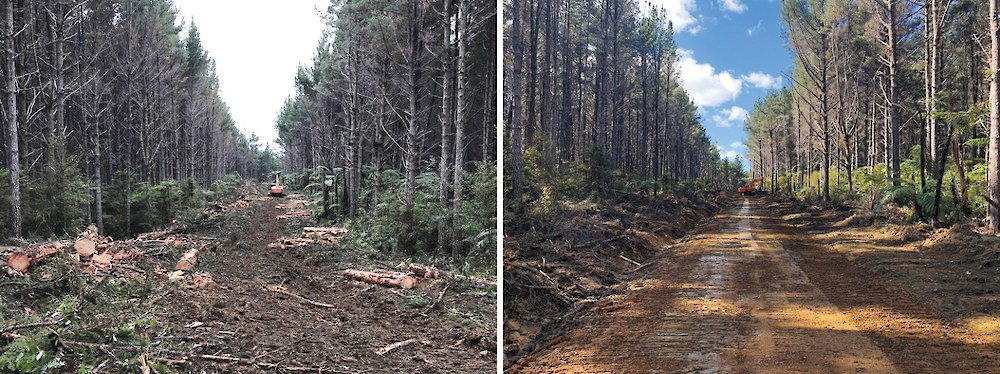A logging crew will need to remove trees before the engineering contractor can start the first step in building the road or landing – clearing and stripping. Determining the width of the salvage has been discussed in the earlier sections. It is critical that the roadline salvage width provides enough room to undertake these operations effectively. Since clearing and stripping must be carried out in advance of earthworks it is important that enough trees have been removed prior to the harvesting crew leaving the site. Ideally, a site inspection should be carried out to confirm that the clearance widths are enough to construct the road or landing effectively.
Safety and environmental impacts must be considered, with care taken to not create or leave hazards that will affect future operations. Hazards arising from roadline salvage and stripping operations include:
- Poor placement of tree stumps on steep slopes, where they may be dislodged by future tree felling and extraction operations
- Leaving trees standing above landing sites or operational areas. These may present windfall risk to road users and harvesting workers.
 The roadline salvage width is wide enough to form the road
The roadline salvage width is wide enough to form the road